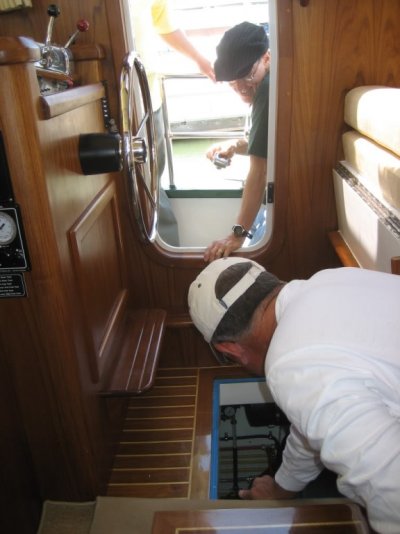Daddyo
Guru
Key on starboard engine
throttle in idle position push start button
turn key off and wait a few seconds to kill buzzing
turn key on
same procedure for port engine
down steps to forward area and enter port cabin
enter engine room from port cabin
check engines
get underway
throttle in idle position push start button
turn key off and wait a few seconds to kill buzzing
turn key on
same procedure for port engine
down steps to forward area and enter port cabin
enter engine room from port cabin
check engines
get underway


